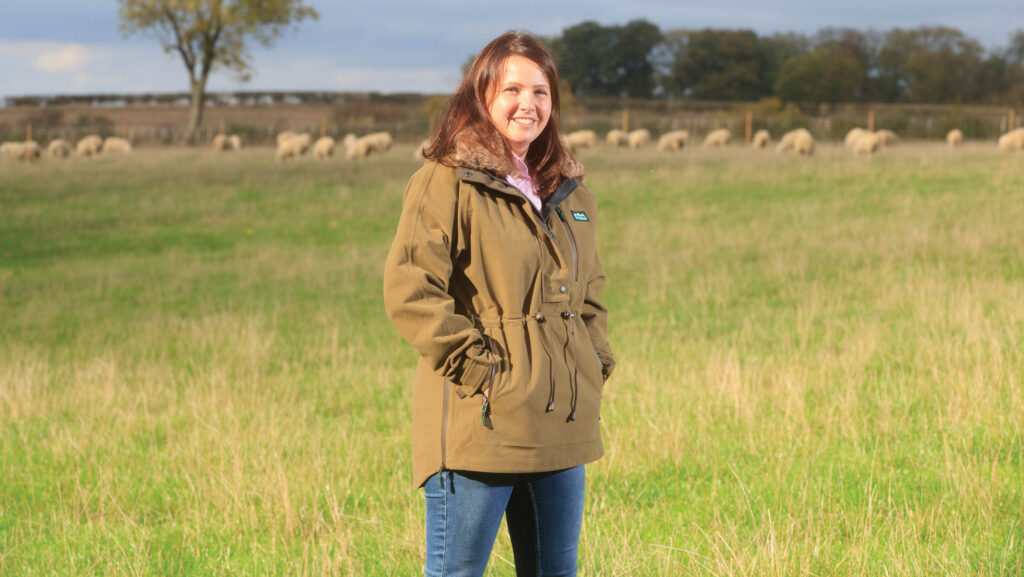Farmer Focus: Stubble turnips ‘best for years’ after drought
 Louise Elkington © Tim Scrivener
Louise Elkington © Tim Scrivener After a long, dry summer, the weather has finally broken and now seems determined to deliver all the rain we missed – in one go.
Fortunately, most of our stock has moved off farm and onto lighter heathland, where ground conditions can cope better with the sudden influx of moisture.
See also: How the Islavale Simmental herd manages 15% twins
The forage crops have responded remarkably well to this wet spell, with the stubble turnips looking the best they have for several years.
The first batch of lambs went onto them this week, including the ewe lambs.
After struggling through the dry summer, these have some catching up to do, and the improved crop should give them exactly the lift they need.
Tups went in at the end of October, and about 50% of the ewes were covered within the first week, which usually bodes well for tight lambing.
Our main concern now is how the prolonged dry spell might affect scanning results.
The plan this year is to lamb both flocks outdoors. Singles and triplets will be brought inside to make adoptions and management easier.
However, this strategy might change depending on how many triplets we’re expecting. The final decision will be made after scanning.
On the cattle side, the nervy wait for scanning results is over. We were delighted that all cows are in-calf, but we also have two sets of twins on the way.
Twin calves
While this may sound like a straightforward win for increasing numbers, twin pregnancies in cows are a mixed blessing.
Twin-bearing cows are at higher risk of several issues, including more stress on the cow, potentially weaker calves needing more attention, freemartin heifers that can’t be retained for breeding, increased risks of calving issues, and prolapses.
Careful management, particularly around nutrition, will be needed.
As we move into the next busy phase of the year, the focus shifts to Christmas.
Meat orders are flooding in via the online shop, which is allowing us to keep track of orders.
This year, we are also offering locally sourced poultry.
We’re fortunate to have an excellent free-range poultry producer just 20 minutes from us, and being able to include their birds in our range has added real value to what we can offer.
Customers appreciate high-quality, local food, and the ability to buy not just our lamb, but also meat from other trusted local farms, is proving extremely popular.

